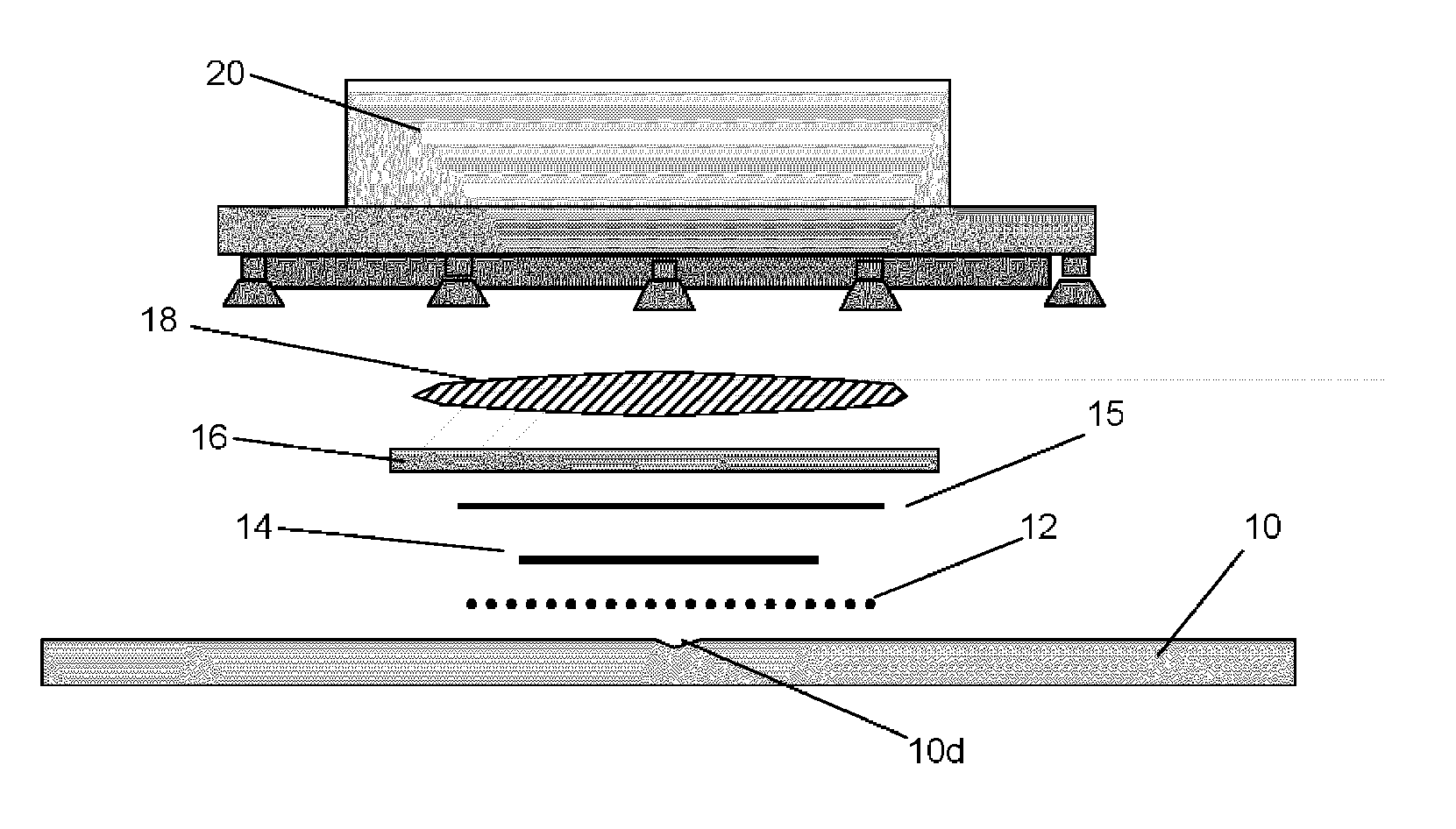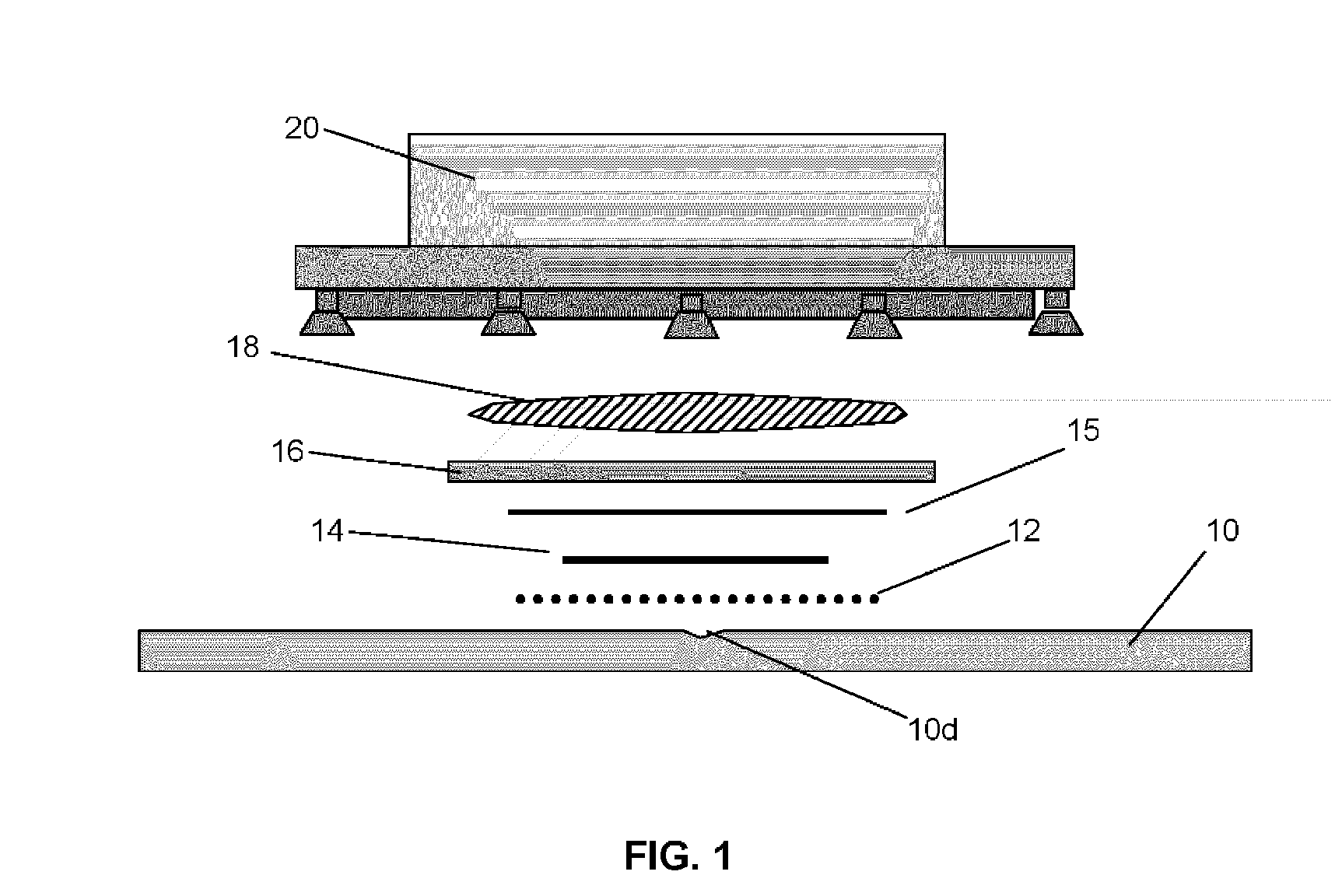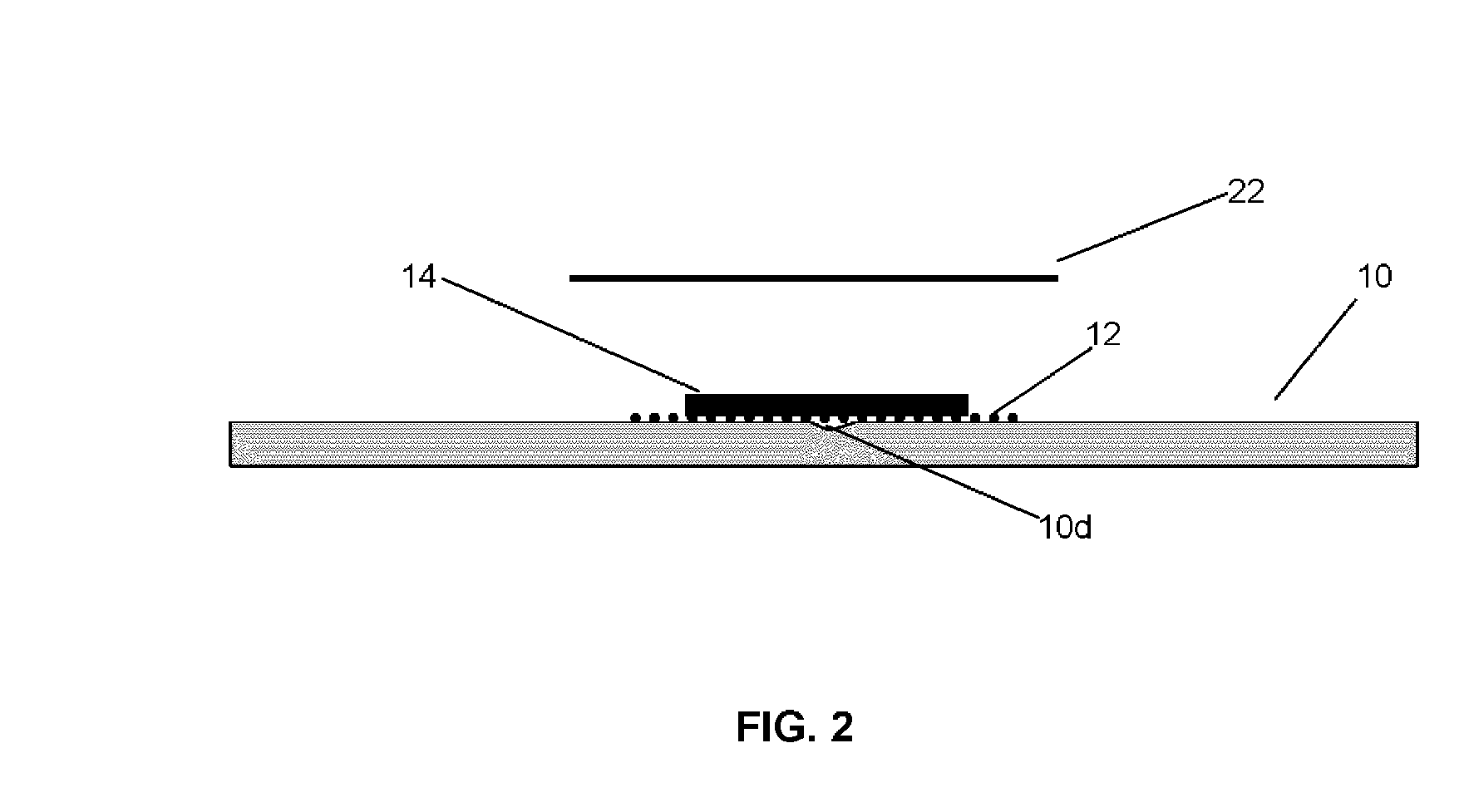Fast line maintenance repair method and system for composite structures
a composite structure and fast line technology, applied in the field of structures repair methods and systems, can solve the problems of increasing the support cost of aircraft, commercial airlines today do not have the ability to repair structural damage to aircraft's composite structures, and the average composite repair permitted in the structural repair manual (srm) takes approximately 15 hours to complete, and achieves minimal skill and minimal tools or equipment. , the effect of quick repair
- Summary
- Abstract
- Description
- Claims
- Application Information
AI Technical Summary
Benefits of technology
Problems solved by technology
Method used
Image
Examples
Embodiment Construction
[0013] An exemplary embodiment of a repair method of the present invention begins with the preparation of the damaged structure 10. Any material protruding from the damage site 10d is removed and a bonding surface surrounding the damage site is prepared by removing any paint or covering on the bonding surface such as by sanding. The sanding should not go into the fibers of the composite. The bonding surface is then abraded to remove any glossy areas remaining and cleaned.
[0014] An adhesive 12 is applied to the bonding surface of the damaged structure. Care should be taken to ensure adequate bondline thickness control. A notched trowel or the like can be used for this purpose. Such a tool can be provided as part of a kit for carrying out such repairs. The adhesive 12 can be of a type that cures at ambient or elevated temperatures. Preferably, the adhesive 12 multi-component paste adhesive that has a short working life and can quickly cure when a low temperature heat is applied. Such...
PUM
| Property | Measurement | Unit |
|---|---|---|
| temperature | aaaaa | aaaaa |
| cure time | aaaaa | aaaaa |
| temperatures | aaaaa | aaaaa |
Abstract
Description
Claims
Application Information
 Login to View More
Login to View More - R&D
- Intellectual Property
- Life Sciences
- Materials
- Tech Scout
- Unparalleled Data Quality
- Higher Quality Content
- 60% Fewer Hallucinations
Browse by: Latest US Patents, China's latest patents, Technical Efficacy Thesaurus, Application Domain, Technology Topic, Popular Technical Reports.
© 2025 PatSnap. All rights reserved.Legal|Privacy policy|Modern Slavery Act Transparency Statement|Sitemap|About US| Contact US: help@patsnap.com



